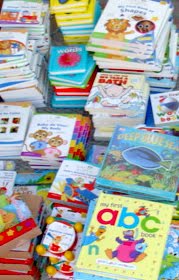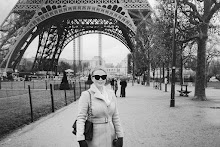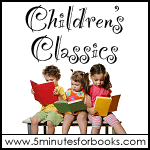 An article on today's Los Angeles Times movie blog brought attention to one of the top movies from this past weekend, Diary of a Wimpy Kid, the Fox film based on the series of graphic novels by Jeff Kinney. In addition to the $22 million raked in by Wimpy Kid, Disney's adaptation of the classic Lewis Carroll children's story Alice in Wonderland was the number one movie at the box office for the third week in a row.
An article on today's Los Angeles Times movie blog brought attention to one of the top movies from this past weekend, Diary of a Wimpy Kid, the Fox film based on the series of graphic novels by Jeff Kinney. In addition to the $22 million raked in by Wimpy Kid, Disney's adaptation of the classic Lewis Carroll children's story Alice in Wonderland was the number one movie at the box office for the third week in a row.
Following the massive success of the first Harry Potter movie in 2001, it seemed like children's books could be a blockbuster trend on par with superheroes. Even so, Hollywood has come up short with a children's franchise that could take its place after the final chapter in the series comes out in summer 2011. Besides the JK Rowling-inspired films, and to some extent, the two Chronicles of Narnia movies, most movie adaptations of children's books have not caught on with audiences. For example, the movies based on Lemony Snicket's A Series of Unfortunate Events and the recent Percy Jackson & the Olympians were both box office disappointments. In addition, The Golden Compass, starring Nicole Kidman, helped bankrupt New Line Cinema.
So what made Alice in Wonderland and Diary of a Wimpy Kid such successes? It's hard to tell. The Times points to the smaller budget and younger stars of Wimpy Kid; it's a story that its target audience can relate to.
With "Diary" (and, in a somewhat different sense, with "Alice in Wonderland"), there are signs that the post-Potter boom is finally here. "Diary" producers pulled off a well-regarded pre-teen film despite a smaller budget than many of their more action-oriented counterparts. And they did so by showcasing a central character who's roughly the same age as much of the film's target audience. (The conventional wisdom among producers of youth-skewing movies is that most kids in elementary school and junior high want to see older characters, a la "Twilight" and "Pirates of the Caribbean").
In addition, both Wimpy Kid and Alice in Wonderland received generally favorable reviews from critics and audiences alike, while movies like Percy Jackson and Lemony Snicket had much more negative reactions. Perhaps the reason why no movies based on children's books have lived up to Harry Potter expectations is that none have lived up to the quality of the Harry Potter series. Hopefully upcoming movie adaptations of children's literature, such as the Selena Gomez vehicle Beezus and Ramona, will have similar success.
There's something wholesome, almost quaint, about children's books now getting all this movie attention (Cleary began writing her books in the 1950s -- she's not exactly J.K. Rowling), especially as books written for adults figure less into Hollywood's plans.
But with seemingly every toy and board game out there now mined for its movie potential, there's also something refreshing about seeing Hollywood look to literary material for a big hit -- until the next one flops, anyway.
What children's books would you like to see turned into a movie?
You can find the whole article here.











